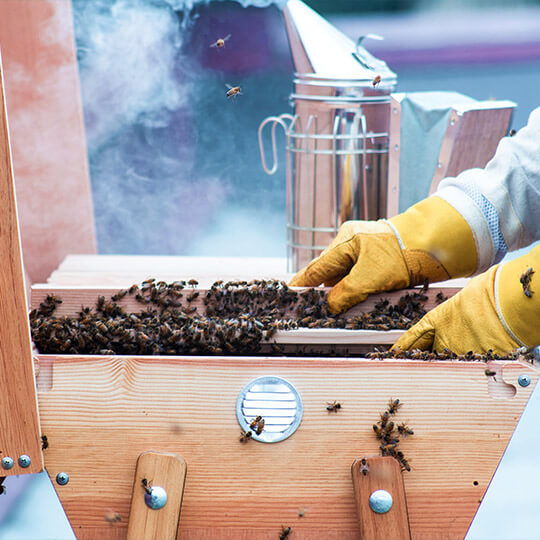
Renowned for its many virtues and for its variations of flavors, honey is a natural product, consumed since antiquity. But what are the stages of its manufacture, from the nectar collected by the foraging bees to the pot on your breakfast table?
The production of honey by bees
Treasure of nature, honey is the result of a close interaction between bees and flowers. By secreting nectar, the flowers attract pollinating insects, which will disperse the pollen in their path and allow the fertilization of plants. Raw material for honey, the nectar is collected by the foraging bees on the honey flowers: once returned to the hive, they regurgitate it to transmit it to the recipient bees.
How nectar becomes honey
Trophallaxis refers to the transfer of food to which the bees in the hive will indulge. It is during this repeated process of passing the nectar from the social crop of one bee to that of another that a chemical transformation will take place. In contact with an enzyme present in the crop of bees, invertase, the sugars of the plant will be transformed into glucose and fructose by a chemical reaction called hydrolysis of sucrose. During this chemical and enzymatic reaction, the chains of molecules in the nectar are broken by the action of a water molecule (H2O). The sugars obtained are formed from simpler molecular chains: we speak of monosaccharides.
The last bee in the chain regurgitates the drop of nectar transformed in a honeycomb of the hive. Another enzyme then comes into play: glucose oxidase which causes the formation of gluconic acid and hydrogen peroxide, themselves essential for the preservation of honey and its protection against bacteria or fungi.
Finally, the water contained in the nectar evaporates under the joint action of the heat of the hive and the ventilating bees, which create air movements with their wings. When the water content is less than 18%, the honey will be stored in new cells closed by lids.
This is when the honey can be harvested by the beekeeper!

Harvesting honey in beekeeping
In beekeeping, bee swarms are installed in pre-designed hives for collecting honey. The bees build the cells on frames that will be easy to remove when the time comes. To harvest honey, the beekeeper equips himself with a white protective suit, a color that leaves bees indifferent. The smoke is used to prevent the bees from transmitting stress pheromones among themselves, which could alert the entire hive of danger and make the bees aggressive.
Harvesting then consists of removing the frames, then uncapping the cells containing the honey. Once this is done, the frames are usually placed in an extractor centrifuge, which facilitates harvesting. The honey will finally be filtered during the decantation stage. A rest of about fifteen days is observed before potting.
Discover the different types of high quality honey offered by Maison Peltier: liquid, creamy honeys harvested in the rules of the art, 100% natural and unpasteurized, but also delicious cookies, gingerbread and honey cakes.
